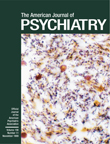Sublingually Administered Fluoxetine for Major Depression in Medically Compromised Patients
To the Editor: Fluoxetine, the selective serotonin reuptake inhibitor first introduced for clinical use in the United States in 1988, was discovered in the early 1970s. The long half-life of the drug and its metabolite contribute to a 4-week period to reach steady-state concentrations. As with all available antidepressants, the effects of fluoxetine are seen in the first 1-3 weeks, but the clinician should wait until the patient has been taking the drug for 4-6 weeks before evaluating its antidepressant activity. Fluoxetine is available in 10-mg and 20-mg capsules and as a liquid (20 mg/5 ml) (1–5).
Sublingual delivery gives rapid absorption and good bioavailability for some small permeants, although this type of administration is not well suited to sustained-delivery systems. The sublingual delivery can be predictably used in fasting patients, those having difficulty swallowing, or those who are unable to absorb drugs through the gastrointestinal tract. Furthermore, the sublingual dose is the same as the oral dose. In the following two cases, each patient was diagnosed with major depressive disorder and treated effectively with sublingually administered fluoxetine in a hospital setting.
Mr. A was a 56-year-old, married Caucasian man with four children who was admitted to the hospital after a crush injury. Before the accident, Mr. A was a high-functioning individual with no medical or psychiatric problems. His stay in the hospital was complicated with multiple medical and surgical problems, including a sigmoid resection, a cholecystotomy, and a gastrointestinal fistula. During his recuperation, Mr. A became depressed, so a consultant psychiatrist became involved in his care. He was diagnosed with major depressive disorder, requiring treatment with antidepressant pharmacotherapy. Mr. A was unable to ingest pills orally because of his multiple gastrointestinal problems; therefore, he was given fluoxetine in liquid form sublingually by using a dropper administered by a trained staff member. Treatment was initiated as 10 mg/day sublingually (liquid fluoxetine=20 mg/5 ml), and the dose was gradually increased to 20 mg/day.
Mr. A responded to sublingually administered fluoxetine, and his depressive symptoms resolved within 4 weeks; he had improvements in mood, affect, and the activities of daily living as well as social interactions. Four weeks after the treatment was initiated, his plasma fluoxetine and norfluoxetine levels were measured and found to be in the lower end of the therapeutic range (fluoxetine=47 ng/ml and norfluoxetine=52 ng/ml). Mr. A was maintained with sublingual fluoxetine treatment for 9 weeks, but he was switched to oral administration of the medication as a result of improvement in his medical condition. Mr. A remained psychiatrically stable during the rest of his hospital stay, and he was eventually discharged while receiving oral fluoxetine treatment with outpatient instructions.
Mr. B was a 52-year-old, married Caucasian man with one child who was admitted to the hospital surgical floor after a motor vehicle accident. In the operating room, surgeons performed abdominal decompression with the placement of a J-tube, surgical repair of the mesenteric system, and a splenectomy. Mr. B’s hospital stay was complicated by the formation of an enterovesicular fistula. Shortly after his admission to the hospital, Mr. B became clinically depressed and had psychomotor retardation and feelings of hopelessness. He was diagnosed with major depressive and generalized anxiety disorders by a psychiatrist. Because of his gastrointestinal problems, Mr. B was unable to take any medications orally. Sublingual fluoxetine treatment was initiated with a dose of 10 mg/day, and the dose was gradually increased to 20 mg/day. Within 4 weeks, Mr. B became more verbal and interactive, with improved sleep and appetite. His serum fluoxetine and norfluoxetine levels were within a therapeutic range after 4 weeks of treatment (fluoxetine=62 ng/ml and norfluoxetine=78 ng/ml). Fluoxetine was eventually switched to the tablet form as a result of improvement in Mr. B’s medical condition. He was discharged to a rehabilitation facility while receiving oral fluoxetine treatment.
Depression is a common problem in medically compromised patients in hospital settings. Many of these patients have conditions such as difficulty swallowing or being unable to absorb drugs through the gastrointestinal tract. In this letter, we presented two cases of patients with severe depression who were treated with sublingual delivery of a commonly prescribed antidepressant—fluoxetine. Plasma drug levels of fluoxetine and its metabolite, norfluoxetine, were in the therapeutic range in each case. To provide more effective treatment for these patients, psychiatrists need to begin using alternative ways of delivering drugs when necessary.
1. Fava M, Uebelacker LA, Alpert JE, Nierenberg AA, Pava JA, Rosenbaum JF: Major depressive subtypes and treatment response. Biol Psychiatry 1997; 42:568–576Crossref, Medline, Google Scholar
2. Harris D, Robinson JR: Drug delivery via the mucous membranes of the oral cavity. J Pharm Sci 1992; 81:1–10Crossref, Medline, Google Scholar
3. Janicak PG, Davis JM, Preskorn SH, Ayd FJ: Principles and Practice of Psychopharmacotherapy. Baltimore, Williams & Wilkins, 1997Google Scholar
4. Motwani JG, Lipworth BJ: Clinical pharmacokinetics of drug administered buccally and sublingually. Clin Pharmacokinet 1991; 21:83–94Crossref, Medline, Google Scholar
5. Preskorn SH: Clinically relevant pharmacology of selective serotonin reuptake inhibitors: an overview with emphasis on pharmacokinetics and effects on oxidative drug metabolism (review). Clin Pharmacokinet 1997; 32(suppl 1):1–21Google Scholar



